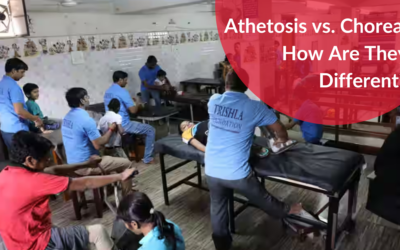CEREBRAL PALSY AND GENETIC DISORDERS
Releted Posts
Cerebral Palsy
Cerebral Palsy Types
Cerebral Palsy Myths
Cerebral Palsy Surgery In India
Cerebral Palsy Children
Cerebral Palsy Defination
Cerebral Palsy Care Plan
Cerebral Palsy Prognosis
Cerebral Palsy Symptoms
Cerebral Palsy Treatment
Cerebral Palsy Therapy
Cerebral Palsy Organizations
Cerebral Palsy Living Style
Cerebral Palsy Birth Injury
Cerebral Palsy Associated Disorder
Cerebral Palsy Eating Feeding Tips
Cerebral Palsy Sleeping Disorder
Diplegia Spastic Cerebral Palsy
Spastic Cerebral Palsy
Yoga & Physiotherapy
Donate Now
Your one donation can give someone a new life
Common neurodegenerative and neurometabolic disorders can be mistaken for cerebral palsy. These “CP mimickers” are now an increasingly growing group of metabolic and genetic disorderswith symptoms and signs resembling CP children. These CP mimickers are common, particularly in highly consanguineous populations. Their clinical presentation may be nonspecific or very slowly progressive, especially at the early age, hence can be easily misdiagnosed as CP. In present scenario. We are able to find out the exact aetiology by different genetic evaluation. So it is very important to identify in suspected cases where picture is not clear. Identifying the aetiology of CP has practical consequences, such as proper family counselling about the cause of the disease, risk of recurrence, prognosis, and in some diseases provide disease-modifying therapy.
Thorough history and a careful neurological examination are essential in the evaluation of a patient suspected to have CP. The increasing use of next generation sequencing in neurological, neuromuscular and metabolic conditions will detect more and more CP mimicsand therefore decreasing the total burden from CP.
The possibility of a treatable metabolic cause of CP along with a more accurate diagnosis and genetic counselling emphasizes the importance of being particularly vigilant in determining the aetiology.
When we suspect genetic cause (Cerebral Palsy Mimics) in case of child with neuro- developmental disorder?
Following are the symptoms in a patient’s history which point against the diagnosis of cerebral palsy:
Absent history of any risk factors leading to brain injury, such as prematurity, perinatal or infantile hypoxic ischemic insult, intracranial bleeding, kernicterus, cerebral vascular accident, infection, or head trauma,
Family history of CP,
Progressive neurological symptoms,
Regression of milestones,
Diurnal variation of symptoms
Fluctuation in symptoms in relation to activity or fasting,
Appears “different”/ “unusual” as compared to other family members,
Isolated motor dysfunction (hypotonia without dystonia or spasticity or isolated ataxia),
Peripheral nervous system abnormalities (sensory sign or absent reflexes),
Eye movement abnormalities (paroxysmal saccadic eye-head movements, oculogyria, or oculomotor apraxia) and
Optic atrophy or retinopathy are atypicalin CP children.
What are the investigation required to evaluate aetiology of neurodevelopmental disorder (Cerebral Palsy Mimics)
Most of the d has overlapping or non-specific phenotypes. When clinical and neuroimaging findings are non-specific and no specific cause is suspected, other investigations should be carried out to rule out an underlying metabolic or genetic disease. These investigations comprise of:
Blood investigations:
Complete blood count, liver function tests, kidney function tests, serum sodium, potassium, chloride, calcium, phosphate, ALP
Metabolic screening tests:
ABG, serum ammonia, lactate, blood glucose, urine ketones, dried blood spot for Tandem mass spectrometry (TMS), urine gas chromatography mass spectrometry (GCMS).
Biochemical tests:
Enzyme assays and functional assays
Radiological investigations:
skeletal survey, MRI brain
Electrophysiological studies:
EEG, EMG, NCV
Cytogenetic tests:
karyotyping, chromosomal microarray
Molecular tests:
PCR, Sanger sequencing, MLPA
Next-generation sequencing (whole exome sequencing/clinical exome sequencing)
In recent years, advanced genetic testing techniques have become affordable and easily available to efficiently diagnose rare disease-causing mutations in children with suspected genetic disorders.
What is the role of Genetic Clinical Specialist for evaluation of children with cerebral palsy like symptoms?
Diagnosis:
Clinical genetics allows for the accurate diagnosis of suspected genetic disorders misdiagnosed as CP, which can be challenging based on symptoms alone.
Treatment:
Advances in clinical genetics have led to the development of personalized treatment plans for individuals with genetic disorders. These treatment plans consider the patient’s genetic mutations and other factors to optimize treatment outcomes. Surveillance protocols personalised to the child’s diagnosed condition is an aid to early detection and management of various manifestations possible.
Prevention:
Clinical genetics provides the ability to identify individuals or future offspring at increased risk of developing genetic disorders and implement preventive measures to reduce their risk. Based on the disorder identified and risk, the clinical geneticist may discuss reproductive options including prenatal diagnosis in form of Chorionic villus sampling (CVS) at 11-13weeks of pregnancy/ Amniocentesis at 16 weeks of pregnancy to test for the confirmed genetic disorder in previous sibling or family member. Option of In-vitro fertilisation (IVF) with donor egg/sperm can also be given to couples based on the disorder identified.
Research:
Clinical genetics research is critical for advancing our understanding of genetic disorders and developing new treatment options. Newer treatment options are increasingly being developed according to the specific mutation that patients carry.
Watch Our Success Stories
Cerebral palsy is a lifelong condition that affects individuals from infancy, presenting multiple challenges. As a parent & specialist, it's essential to have comprehensive information to navigate this journey.
Subscribe to our YouTube channel to access: Educational videos, Real-life case reports, Inspiring success stories
Stay informed, stay empowered!
Page Medically Reviewed and Edited by
Dr Sakshi Rajoria
Fellow Clinician genetics Consultant Paediatric Clinical Genetics Trisha foundation, Prayagraj, UP


Page Medically Reviewed and Edited by
Dr Sakshi Rajoria
Fellow Clinician genetics Consultant Paediatric Clinical Genetics Trisha foundation, Prayagraj, UP
Testimonials
Make a Difference
Support Trishla Foundation's Life-Changing Work for Children with Cerebral Palsy!
Together, we can break barriers and empower children with cerebral palsy. With your generous contribution, Trishla Foundation can continue its vital work in providing therapies, education, and support to these incredible children. Help us create a brighter future by donating today!



